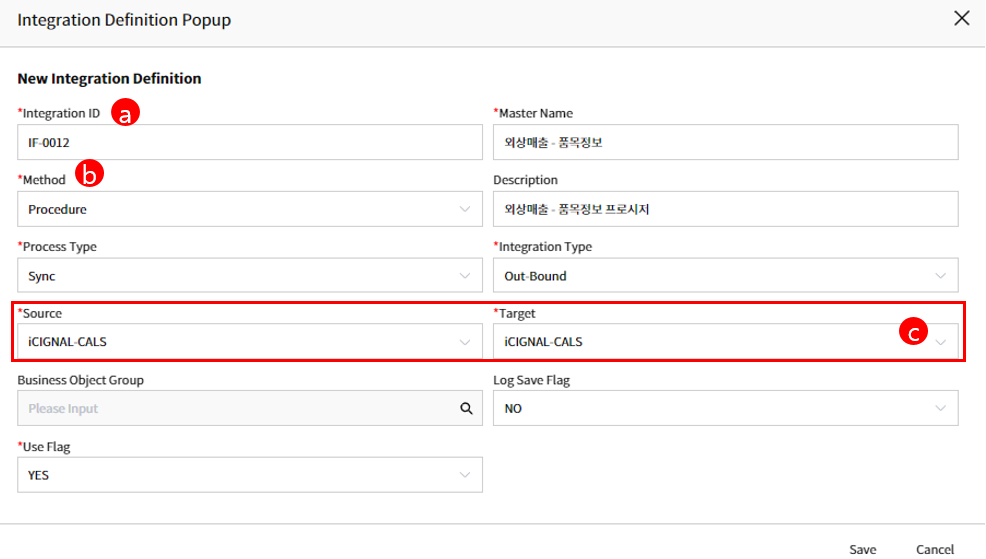Integration Definition
Integration Definition is an item used to define DB procedures, DB functions, and Rest APIs for use in Cals Platz screens or functionalities.
To define this, first, generate information to interface with the outside. Register basic information, procedure or API information, and parameters defining the integration item in Integration.
How-To Create
- Select Integration > Integration Definition in the Object Explorer.
- Click on
Newin the Integration Definition List to enter new Interface information.

a. Integration ID: An ID recognized by Cals Studio, regardless of the name of the procedure, function, or API. b. Method: Rest API, Procedure, Function can be specified. (Socket TBD) c. It does not function as a record of integration information. Typically, for Procedure and Function, both Source and Target are specified as ICIGNAL CALS, and for Rest APIs, Source: ICIGNAL CALS, Target: External System.
Note: Fields not listed above are to be assigned valuesProcess Type: Sync (Async TBD) Integration Type: Out-Bound (In-Bound TBD) Business Object Group: Unspecified (Purpose unclear) Log Save Flag: No (TBD)
The items to be entered dynamically change depending on the
Method Typeset in the Integration Definition.[For Reat API, additional input information]

a. Target URL: Rest API URL dynamically specifies API calls for App, Sandbox, Prod, etc. b. Operation: If data is queried and used in Cals screens, select
select, otherwisecreate,update,deleteare variables used on the API side.
c. Procedure or Function Name: Must be identical to the actual name declared in the DB. d. Data Source Name: Specifies the Data Source where the Procedure or Function is declared.
Finally, to set each field used in the interface, create Interface-specific fields such as Type, Data Length, Required Flag in the Integration Parameter List.

a. Must match the variable names in the API, Procedure, or Function as declared in the program. b. Declare CALS-provided variables as
outputand received variables asinput. c. Specify according to the order of parameters declared in the Function. d. If Required Flag is set toYES, error processing is performed based on validation. When error processing occurs, the specified parameter name is displayed as it is, resulting in unfriendly error messages. Therefore, it is recommended not to use this value for user input value checks. If actual required value checks are needed, use the Required property of the Control or use Focus and Alert Actions.